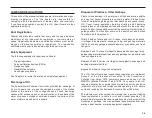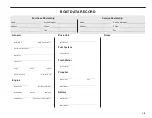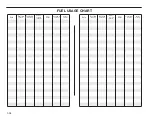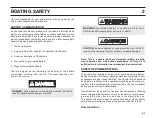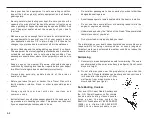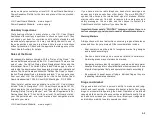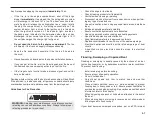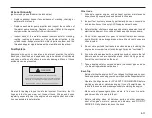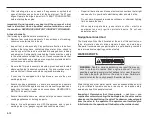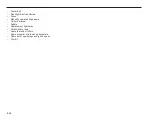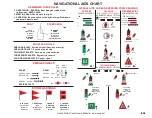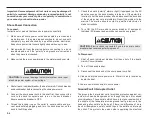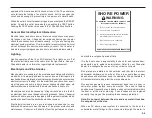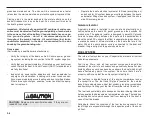
Any fire requires stopping the engine(s)
immediately.
Then:
•
If the fire is in the engine compartment, shut off the bilge
blower
immediately.
If equipped the fire extinguisher system
will discharge in the event of a fire. The heat sensitive auto-
matic head will release the extinguishant as a vapor, totally
flooding the compartment in fire-killing concentrations. The
system indicator light is wired to the ignition and is turned on
when the ignition is turned on. The indicator light, located at
the dash panel, indicates to the helmsman when the unit has
discharged. Under normal operation, the indicator light is lit. If
the unit discharges, the charge light will go out.
•
Do not open the hatch to the engine compartment!
The fire
will flare up if the fresh air supply increases suddenly.
•
Keep the fire downwind if possible. If the fire is aft, head into
the wind.
•
Have all persons on board put on their personal flotation devices.
•
If you can get at the fire, aim the fire extinguisher at the base of
the flames and use a sweeping action to put out the fire.
•
If the fire gets out of control, make a distress signal, and call for
help on the radio.
Deciding whether to stay with the boat or abandon ship will be difficult.
If the decision is to abandon ship, all persons on board should jump
overboard and swim a safe distance away from the burning boat.
Guidelines for Fire Prevention
•
Check the bilge for fuel leaks
•
Check cleaning products for flammability
•
Ventilate when cleaning or painting
•
Disconnect electrical system from power source when perform-
ing any type of maintenance
•
Use extra caution when using exposed flame around urethane
foam
•
Extinguish smoking materials carefully
•
Ensure ventilation systems are not obstructed
•
Use only approved marine cooking and heating systems
•
Open flames demand constant attention
•
Keep flammable materials in approved containers
•
Replace circuit breaker fuse with one of the same amperage
•
Electrical appliances must be within rated amperage of boat
circuits
•
A qualified marine electrician should service the electrical
system
Flooding, Swamping or Capsized Boat
Flooding or swamping is usually caused by the actions of an inat-
tentive boat operator, or by hazardous weather or water conditions.
To prevent boat flooding:
•
Install drain plug before launching.
•
Ensure proper bilge pump operation.
•
Do not overload boat.
•
Adjust boat speed and trim to match sea and weather
conditions.
•
Close all cabin hatches, doors, etc. while underway to prevent
flooding due to heavy seas or rain. Ensure proper ventilation to
avoid carbon monoxide poisoning. See carbon monoxide hazard
information later in this chapter.
•
When only using one anchor, it should be attached to the bow of
the boat.
•
When slowing down or moving in reverse do not allow wake or
following seas to flood cockpit.
If your boat becomes swamped or capsizes, put on a PFD immedi-
2-7
WARNING:
Smoking, poor maintenance, or carelessness when
refueling can cause hazardous conditions. Always follow proper
refueling procedures for your boat.
Summary of Contents for 2012 SSi
Page 15: ...1 7...
Page 16: ......
Page 20: ......
Page 49: ...3 14...
Page 74: ...5 16...
Page 75: ...5 17...
Page 93: ......
Page 101: ......
Page 108: ...WIRING SCHEMATICS 12 12 1 196 206 216 SSI...
Page 109: ...12 2 196 206 216 SSI...
Page 110: ...12 3 226 SSI...
Page 111: ...12 4 226 SSI...
Page 112: ...12 5 246 SSI...
Page 113: ...246 SSI 12 6...

